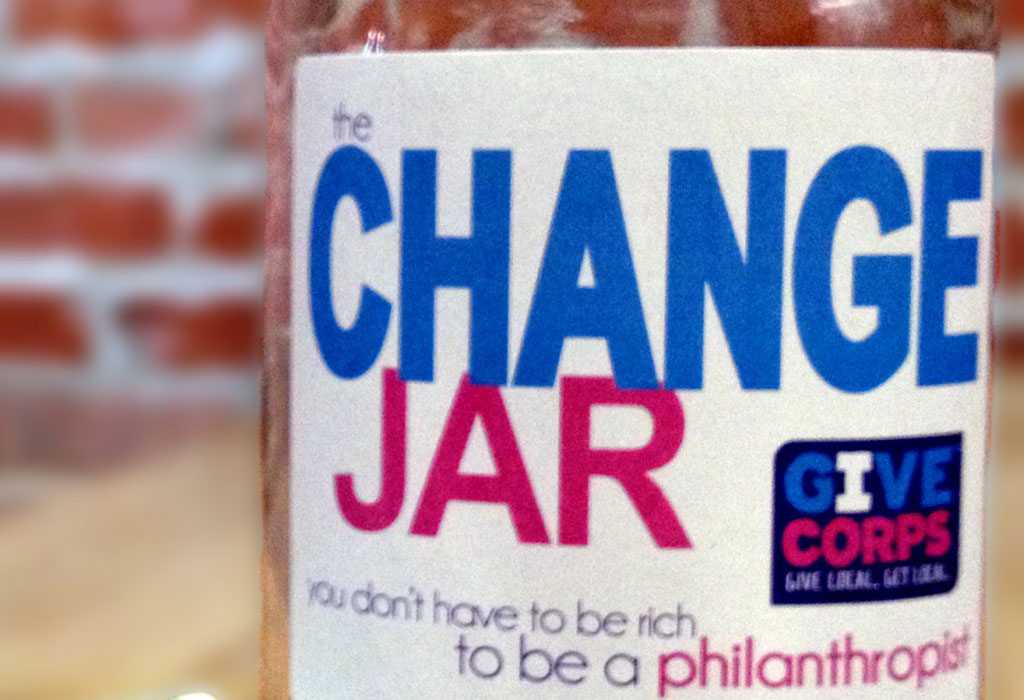GiveCorps, the Charles Village-based startup looking to change the structure of online charitable giving, has been busy.
Last month it launched GiveCorps Pro, a software platform that allows nonprofits to license and privately label GiveCorps’ online donation technology to build branded websites — fully responsive for mobile giving via smart phone — around their own fundraising campaigns. The United Way of Central Maryland and the Community Coalition for Haiti are two of the six clients already signed on to use the software, and each launched its Pro site in the past month.

GiveCorps co-founder Jamie McDonald, with VP of merchant and nonprofit relationships, Peter Jackson.
And on the horizon is a national expansion of GiveCorps and its giving platform into 16 different cities, a move that’ll be no doubt be bolstered by a recently closed round of $822,000 in angel funding, supported in part by the Abell Foundation, Bill Me Later cofounder Vince Talbert and Frank Bonsal, Jr., cofounder of New Enterprise Associates.
Ultimately, it’s Jamie McDonald‘s goal to flip the script on charitable giving with the startup she cofounded in 2011 to provide what she calls a “donor-centric” model of online giving for the under-35 crowd. Millennials, she said, are less interested in writing a check for a nonprofit’s general fund and more interested in financially supporting a nonprofit’s specific project that aligns with their interests and values.
“The old sort of e-mail outreach, connected to a form page is, and should be, a thing of the past,” she said. “Young people want to know that they have choice and impact, and that their peers are doing it too.”
Statistics from the 2012 Millennial Impact Report seem to back up McDonald’s claim that (the supposedly underperforming and presently underemployed) Generation Me prefers to learn about nonprofits through websites and social media. Of 6,522 responses, people ages 20 through 35 cite not knowing “how my gift will make a difference” as their biggest “pet peeve” about charitable donations.
It’s this younger demographic that McDonald and GiveCorps’ six other full-time employees are actively courting as they continue growing operations in Baltimore and beyond:
- While the median donation to nonprofits’ GiveCorps campaigns is just $25, the reason GiveCorps is compelling for younger donors, McDonald said, is because they already know to what project their donated money is going.
- The main push is on using new tools, especially mobile, to reach out to the next generation of philanthropic donors, even if the average donation is $72, and not a dollar sum in the thousands or tens of thousands.
So far that model appears to be working: McDonald said GiveCorps should surpass the $500,000 donation mark this month, with 9,347 donations made by 7,318 different donors to community nonprofits, many located right in Baltimore city.
And while licensing out GiveCorps’ technology via its Pro software was consistent with the startup’s mission of making online charitable giving easier for nonprofits looking to attract younger donors, it’s also a play in the company’s monetization strategy.
“We believe in doing well and doing good,” McDonald said.
Before you go...
Please consider supporting Technical.ly to keep our independent journalism strong. Unlike most business-focused media outlets, we don’t have a paywall. Instead, we count on your personal and organizational support.
3 ways to support our work:- Contribute to the Journalism Fund. Charitable giving ensures our information remains free and accessible for residents to discover workforce programs and entrepreneurship pathways. This includes philanthropic grants and individual tax-deductible donations from readers like you.
- Use our Preferred Partners. Our directory of vetted providers offers high-quality recommendations for services our readers need, and each referral supports our journalism.
- Use our services. If you need entrepreneurs and tech leaders to buy your services, are seeking technologists to hire or want more professionals to know about your ecosystem, Technical.ly has the biggest and most engaged audience in the mid-Atlantic. We help companies tell their stories and answer big questions to meet and serve our community.
Join our growing Slack community
Join 5,000 tech professionals and entrepreneurs in our community Slack today!

The person charged in the UnitedHealthcare CEO shooting had a ton of tech connections

From rejection to innovation: How I built a tool to beat AI hiring algorithms at their own game

Where are the country’s most vibrant tech and startup communities?



